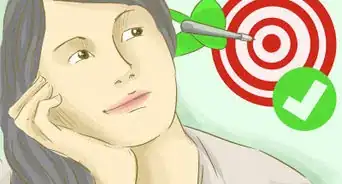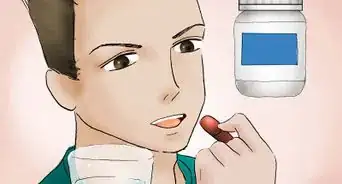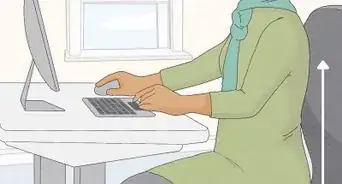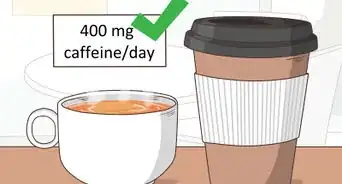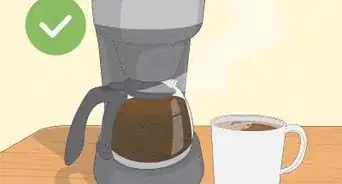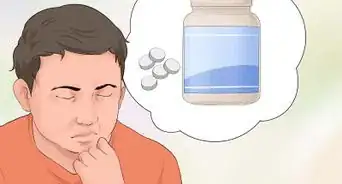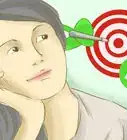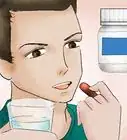This article was co-authored by Melody Sayers, MS, RD, NASM-CPT. Melody Sayers is a Registered Dietitian and NASM (National Academy of Sports Medicine) Certified Personal Trainer. She is the owner of Elevate Your Plate®, a private nutrition counseling and personal training practice, focused on an evidence-based, individualized, realistic, and results-driven approach to improving one's health. With over 8 years of experience, Melody has worked in both the private and public health sectors, helping both individuals and communities achieve milestones in managing their weight and preventing disease. She currently holds a Certificate in Adult Weight Management and a Master of Science in Nutrition, Dietetics, and Food Science from the California State University - Northridge.
There are 7 references cited in this article, which can be found at the bottom of the page.
This article has been viewed 37,118 times.
In our busy world, many people can claim to have a coffee addiction. Though one cup a day isn’t detrimental to your health, having more than one cup of coffee a day can lead to stomach ulcers, insomnia, indigestion, heartburn, and irritable bowel syndrome.[1] You may also be tired of your nonstop cravings for coffee and want to take control of your java addiction. You should first prepare yourself for the withdrawal symptoms of cutting out coffee from your diet and use a replacement beverage to satisfy your cravings. You can then take steps to maintain your coffee free lifestyle permanently.
Steps
Getting Through the Withdrawal Symptoms
-
1Give up coffee gradually. If you drink a lot of coffee every day, about three or more cups every 24 hours, you may want to ease yourself off coffee gradually over a period of time. This will make it easier for your body to get used to less coffee and your withdrawal symptoms may not be as severe.[2]
- According to the FDA, adults can have up to 400mg of caffeine per day, which is about 4 to 5 cups of coffee. Start by limiting yourself to this amount and then lowering it as you are able to (for example, to only 2 or 3 cups a day, and then down to 1, and then 0).[3]
-
2Try to give it up cold turkey. Alternatively, you can challenge yourself to cold turkey within a set time limit, for example, no coffee for a week. Keep in mind you may experience intense withdrawal symptoms during the first five to seven days of quitting coffee cold turkey.
- Sometimes, giving up coffee cold turkey can be a good challenge, especially if you think you be addicted to coffee and want to get rid of the habit. You may also do a no coffee challenge with a friend, where you both cold turkey and support each other as you go through the withdrawal symptoms.
Advertisement -
3Be prepared to feel slow, foggy, and unable to concentrate. On the first one to two days of no coffee, you may start to feel foggy and lethargic in the morning when you wake up and/or at the mid-point of your day. If you tend to have three or four cups of coffee a day at set times, you may feel sleepy or distracted at these times. These are all natural, if not unpleasant, symptoms of withdrawal.[4]
- Some people also experience shaking and sweating when they are going through coffee withdrawal. You should prepare yourself for these symptoms so you can get through your day.
-
4Fight off withdrawal headaches with water. Withdrawal headaches can be helped by staying hydrated with lots of water throughout the day. Try to replace all the cups of coffee you would have throughout the day with cups of water.[5]
- If your headaches are unbearable, you can take over the counter painkillers. Follow the instructions on the label and only take the recommended dosage of the painkiller.
-
5Sleep off your withdrawal symptoms. Sleep can also be a good way to fight off withdrawal symptoms like lethargy or headaches. You may go to bed earlier than usual, especially during the first one to three days of giving up coffee. You can also try to fit in 30 minute naps during the day so your body can recover from the lack of coffee and sleep off any headaches.[6]
- If you are struggling to get to sleep due to withdrawal symptoms, you may take melatonin. You can get melatonin over the counter at your local pharmacy or by prescription. If you have any existing health issues, you should see your doctor before taking melatonin.
-
6Take medication for migraines or see your doctor. If your coffee withdrawal headaches turn into migraines, you should take medication and rest to fight them off. You may want to see your doctor if your migraines become debilitating and get prescription medication for them.[7]
- Migraines are a typical symptom of coffee withdrawal because the absence of caffeine changes the blood flow and electrical activity in your brain. They should go away after a few days of no coffee as your brain will get used to the lack of caffeine and adjust accordingly.
-
7Use exercise and meditation to deal with stress. If you tended to use coffee as a way to stay pumped for the day and deal with stress, you may need to find alternative ways to work through any stress or irritability. You may substitute your morning cup of coffee with a morning run or walk, where you wake up with exercise. Or, you may take a morning yoga class to help you get set for the day, minus the coffee.
- If you feel any stress or irritability throughout your day because you aren't able to have coffee, you can try doing a five minute meditation. Find a quiet, dim area and sit in a comfortable seated position. Close your eyes and think of a place that signifies calm and relaxation to you. This could be a sandy beach, a mountain view, or even your bedroom first thing in the morning. Try to sit still for five minutes and focus on your place of calm.
- You can also use exercise and meditation to distract you from thoughts of coffee and any coffee cravings. When you feel a craving coming on, you can try doing a meditation or going for a walk or run to get your mind off coffee.
Finding a Replacement Beverage or Food
-
1Have herbal tea. One of the more popular replacement beverages for coffee is herbal tea. You can choose an herbal tea that contains caffeine, like green tea, or an herbal tea that is caffeine free, like chamomile tea. Herbal teas can be nice to have in the mornings and throughout the day as they give you something warm and calming to sip, but are still light and do not lead to feeling over buzzed. Tea has also been shown to be healthy for you as it is full of antioxidants.[8]
- If you decide to switch to herbal teas, do some research and try several different types of tea to find ones that fit your tastes. You may want a light tea for the mornings, like a white tea, and a heavier tea in the afternoon, like a green or oolong tea. You may then have a lighter, caffeine free tea at night to help you sleep.
-
2Try hot water. Though hot water may seem like a sad replacement for coffee, it can help to keep you hydrated throughout the day and give you the illusion of sipping a warm cup of java.[9]
- You can add in a slice of lemon or orange to the hot water to give it some flavor, but be careful of this option if you have acid reflux or stomach ulcers, as the citrus can aggravate your stomach acid.
-
3Have dark chocolate. Dark chocolate contains caffeine and can be a good pick me up for when you are feeling sleepy or tired without your cup of coffee. Have a small piece of dark chocolate when you feel a headache or a drop in energy coming on, especially during the early stages of going without coffee. You can also have a piece of dark chocolate as a treat if you are able to go seven days without coffee and are trying to maintain a coffee free lifestyle.[10]
Maintaining Your Coffee Free Lifestyle
-
1Allow yourself to smell coffee and be around it. Try not to restrict yourself from being in coffee shops or smelling cups of coffee. Sometimes the smell of a fresh cup can be comforting enough, even if it isn’t for you.[11]
- Coffee can have social qualities, and you may miss meeting up with friends for a chat at a coffee shop. You should still allow yourself the opportunity to meet up with friends at the local java spot, but substitute your regular coffee order with an herbal tea or hot water. This way, you still get the social benefits of talking over a hot beverage without indulging in coffee.
-
2Make a ritual out of preparing your replacement beverage. Another element of coffee you may miss is the ritual of preparing your first cup in the morning. Create a ritual out of making your replacement beverage so it feels as important and essential as your cup of coffee. Over time, you may end up enjoying your replacement beverage more because you are able to prepare it and make it just the way you like it.[12]
- If your replacement beverage is tea, you may want to read up on how to brew tea properly. You can also invest in a brewing basket, which you can place in a teapot or a travel mug to steep loose tea leaves properly.
-
3Notice how refreshed and calm you feel once you . Many people who permanently report back with feelings of calm, alertness, and contentment. Once you get through the withdrawal symptoms, you may have very few cravings for coffee and feel like you could give it up completely.[13]
- You may decide to cut back more on coffee but still indulge in it occasionally. This may mean having tea in the mornings and then one cup of coffee in the afternoon, or having only tea one day and then one cup of coffee the following day.
- Another option is to cycle through your coffee habit, where you have coffee for a month and then give it up for one month. Then, the following month, you may gradually drink more coffee to build up your tolerance. Over time, your body gets used to caffeine and can become immune to the effects of caffeine, especially if you tend to drink coffee on a consistent basis. Cycling through your coffee habit can allow your body to maintain a balance and feel the effects of caffeine on a moderate basis.[14]
Expert Q&A
-
QuestionAre there any downsides to consuming too much coffee on a regular basis?
 Melody Sayers, MS, RD, NASM-CPTMelody Sayers is a Registered Dietitian and NASM (National Academy of Sports Medicine) Certified Personal Trainer. She is the owner of Elevate Your Plate®, a private nutrition counseling and personal training practice, focused on an evidence-based, individualized, realistic, and results-driven approach to improving one's health. With over 8 years of experience, Melody has worked in both the private and public health sectors, helping both individuals and communities achieve milestones in managing their weight and preventing disease. She currently holds a Certificate in Adult Weight Management and a Master of Science in Nutrition, Dietetics, and Food Science from the California State University - Northridge.
Melody Sayers, MS, RD, NASM-CPTMelody Sayers is a Registered Dietitian and NASM (National Academy of Sports Medicine) Certified Personal Trainer. She is the owner of Elevate Your Plate®, a private nutrition counseling and personal training practice, focused on an evidence-based, individualized, realistic, and results-driven approach to improving one's health. With over 8 years of experience, Melody has worked in both the private and public health sectors, helping both individuals and communities achieve milestones in managing their weight and preventing disease. She currently holds a Certificate in Adult Weight Management and a Master of Science in Nutrition, Dietetics, and Food Science from the California State University - Northridge.
Registered Dietician & Personal Trainer Caffeine intake only modestly raises blood pressure, so those with cardiac diseases or arrhythmias may want to avoid coffee completely or drink it in moderation. The only time coffee consumption can be very dangerous is when Individuals ingest pure caffeine, which is highly concentrated. Pure caffeine is usually sold in powder or liquid forms and does not include everyday drinks such as coffee or tea. One teaspoon of pure powdered caffeine is equal to the amount found in 28 cups of coffee whereas half cup of a highly concentrated liquid caffeine contains the equivalent caffeine levels of more than 20 cups of coffee. Seizures have been observed with rapid consumption of around 1,200 milligrams of caffeine, or 0.15 tablespoons of pure caffeine. Your regular 8 oz. cup of joe only has 95-115 mg per cup so there is no need to worry about seizures occurring with your coffee drinks.
Caffeine intake only modestly raises blood pressure, so those with cardiac diseases or arrhythmias may want to avoid coffee completely or drink it in moderation. The only time coffee consumption can be very dangerous is when Individuals ingest pure caffeine, which is highly concentrated. Pure caffeine is usually sold in powder or liquid forms and does not include everyday drinks such as coffee or tea. One teaspoon of pure powdered caffeine is equal to the amount found in 28 cups of coffee whereas half cup of a highly concentrated liquid caffeine contains the equivalent caffeine levels of more than 20 cups of coffee. Seizures have been observed with rapid consumption of around 1,200 milligrams of caffeine, or 0.15 tablespoons of pure caffeine. Your regular 8 oz. cup of joe only has 95-115 mg per cup so there is no need to worry about seizures occurring with your coffee drinks.
References
- ↑ Melody Sayers, MS, RD, NASM-CPT. Registered Dietician & Personal Trainer. Expert Interview. 6 May 2020.
- ↑ http://www.health.com/health/gallery/0,,20576536_2,00.html
- ↑ Melody Sayers, MS, RD, NASM-CPT. Registered Dietician & Personal Trainer. Expert Interview. 6 May 2020.
- ↑ http://www.theyoganomads.com/travel/survive-5-year-coffee-addiction-expect-first-7-days-hint-sucked/
- ↑ https://www.buzzfeed.com/erinlarosa/this-is-what-its-like-to-give-up-coffee?utm_term=.eaYBJj9vW#.ad5lNeo9A
- ↑ http://www.theyoganomads.com/travel/survive-5-year-coffee-addiction-expect-first-7-days-hint-sucked/
- ↑ http://www.abc.net.au/science/articles/2009/10/19/2718261.htm
- ↑ http://lifehacker.com/why-i-went-without-coffee-for-a-month-and-may-give-it-974284702
- ↑ http://www.health.com/health/gallery/0,,20576536_3,00.html
- ↑ http://www.theyoganomads.com/travel/survive-5-year-coffee-addiction-expect-first-7-days-hint-sucked/
- ↑ http://lifehacker.com/why-i-went-without-coffee-for-a-month-and-may-give-it-974284702
- ↑ http://lifehacker.com/why-i-went-without-coffee-for-a-month-and-may-give-it-974284702
- ↑ http://lifehacker.com/why-i-went-without-coffee-for-a-month-and-may-give-it-974284702
- ↑ http://www.abc.net.au/science/articles/2009/10/19/2718261.htm


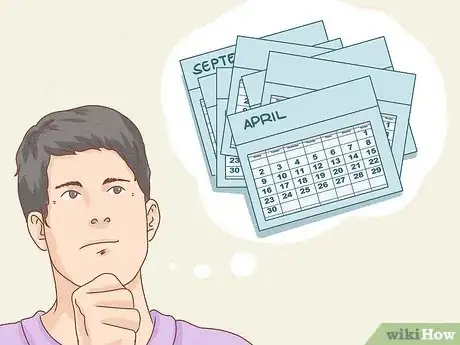



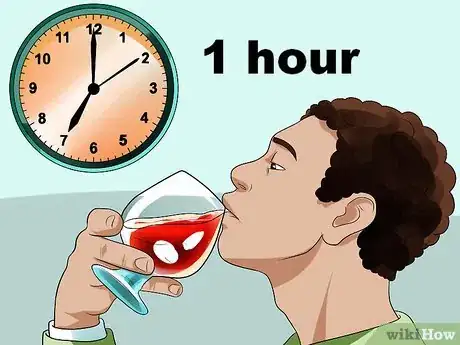




-Step-5.webp)


